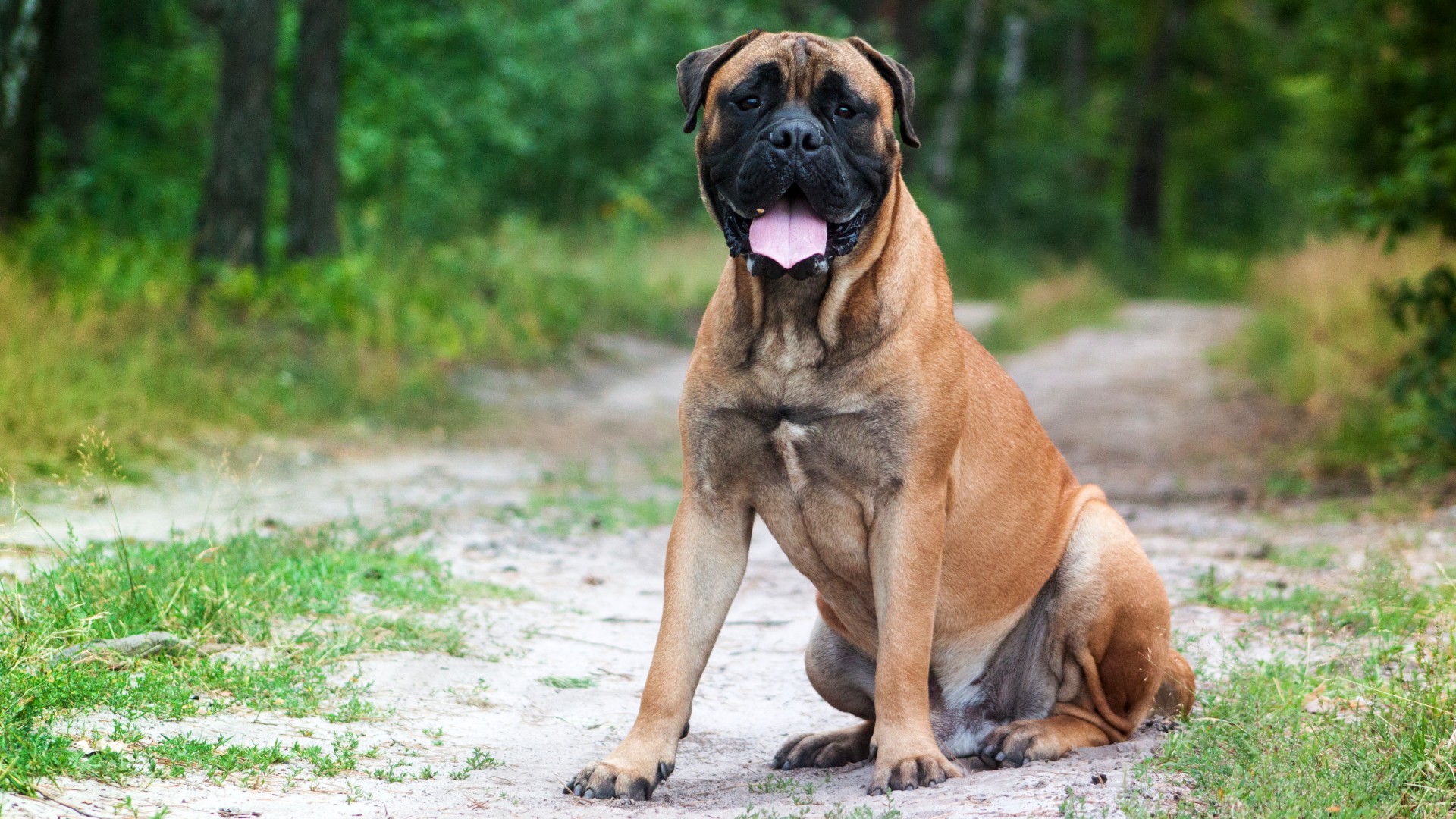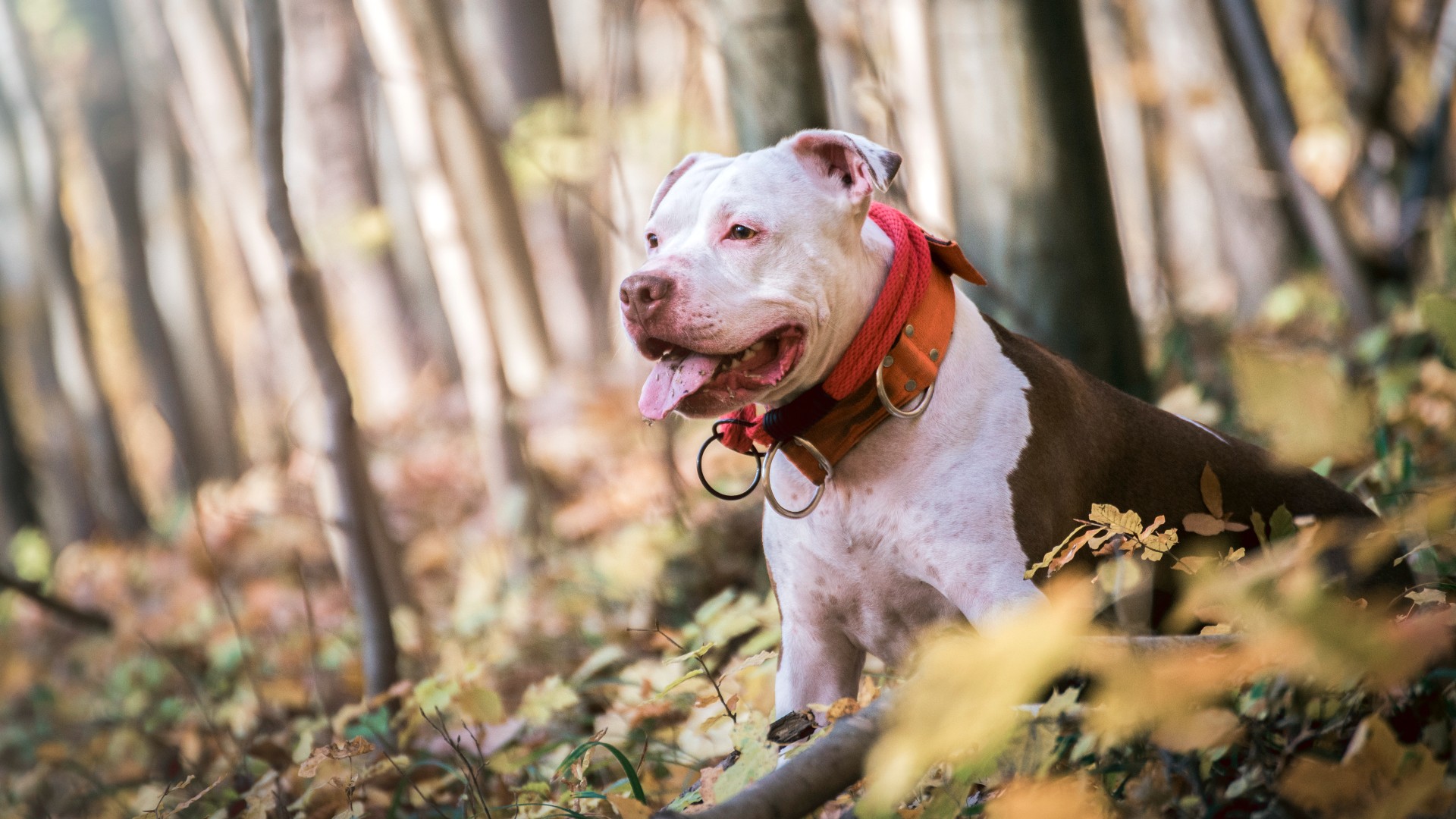Bullmastiff vs Pit Bull: Which breed is right for you?
In the battle of Bullmastiff vs Pit Bull, we examine the temperament, intelligence and trainability of both breeds to help you choose the right forever friend

Bullmastiff vs Pit Bull is a common dilemma for people looking for an affectionate dog with strong protective instincts. While both these breeds certainly tick those boxes, there are some key differences between them that are worth considering.
If you lead a highly active lifestyle and are looking for a dog who will want to join in on all the fun, then the energetic and clown-like personality of the Pit Bull is going to be a better choice for you than the naturally quieter and more sloth-like Bullmastiff.
And yet if what you’re after is a courageous protector who will devotedly watch over you and your family and guard you with its life, the Bullmastiff is going to do a far superior job than the overly friendly and excitable Pitbull.
Regardless of what temperament and traits you most value, both breeds make fantastic family dogs, it’s simply a matter of which one will be a more suitable fit for your home and lifestyle.
Before we dive in to exploring these two canines, it's worth noting that while there are several breeds of Pitbull, in this article when we use the term 'Pitbull' we're referring to the American Pitbull Terrier. Now that we've cleared up any potential confusion, here's everything you need to know about the Bullmastiff and the Pit Bull to help you find the right forever friend for your family.
Bullmastiff vs Pit Bull: Origins
The Bullmastiff hails from England and is a cross between the English Mastiff and the now-extinct Old English Bulldog. Developed in the 1800s, the Bullmastiff was initially used by gamekeepers to protect their catch from poachers and was later imported to South Africa to guard diamond mines.
Like the Bullmastiff, the Pit Bull also started off life in England in the early 1800s and descended from the Old English Bulldog and the Old English Terrier. They were used for the blood sports of dog fighting and rat baiting and were imported into the United States in the 1870s.
In the US, the name ‘Pit Bull’ is considered a diverse grouping that includes the American Pit Bull Terrier, American Staffordshire Terrier, American Bully, Staffordshire Terrier, and occasionally, the American Bulldog.
Bullmastiff vs Pit Bull: Size and appearance
Male Bullmastiffs typically reach a height of between 25-27 inches, with females coming in slightly shorter at between 24-26 inches. In terms of weight, it’s not unusual for males to tip the scales at anywhere between 110-130lbs, with females sitting somewhere between 100-120lbs.
Appearance wise, the Bullmastiff is large-boned and muscular, with a short coat that comes in three colors: fawn, red or brindle. Their dark eyes, v-shaped ears and deep muzzle come together to create an imposing figure that gives the Bullmastiff an alert and confident appearance.
In contrast, the Pit Bull is much more compact with males measuring around 19 inches and females coming in at roughly 18 inches. Given their relatively short stature, the Pit Bull is heavy for its size, with males and females clocking in at between 50-80lbs.
Strong and stocky, the Pit Bull packs more muscles per pound of body weight than any other breed and they have a short and sleek coat which comes in a variety of colors. They tend to have small eyes and their ears may be cropped or uncropped.
Bullmastiff vs Pit Bull: Temperament

While they are certainly known for their guarding abilities and protective nature, the Bullmastiff is actually a very gentle breed overall with a calm and affectionate temperament that makes them devoted family dogs.
However, while the Bullmastiff can be very easy-going and laid back when it comes to the adults and children in their household, the same can’t be said for strangers who they are very suspicious of. They tend to remain on high alert around people they don’t know and they can also be intolerant of other animals.
It’s worth noting that the Bullmastiff is an independent thinker with a high level of intelligence and confidence, so training them can be a challenge. If you’re going to opt for this breed, you need to be prepared to let them know who’s boss - in other words, you!
The Pit Bull has perhaps the most undeserved reputation of all dog breeds having long been stereotyped as dangerous and aggressive. And yet nothing could be further from the truth. These dogs are in actual fact gentle, fun-loving and incredibly patient.
Known for being loyal and affectionate, Pit Bulls on the whole are friendly little souls who tend to have very happy natures. But, they can also be strong-willed and stubborn, so like the Bullmastiff, they do require an owner who can confidently assert their authority.
Bullmastiff vs Pit Bull: Intelligence and trainability
Both the Bullmastiff and the Pit Bull are known for being highly intelligent, which would make them a breeze to train if it weren’t for the fact that both breeds can also be stubborn at times.
The Bullmastiff is more of an independent thinker than the Pit Bull, so of the two breeds, they’re more likely to need firm consistency to keep them on track. Pit Bulls tend to be very eager to learn, so as long as you keep things upbeat, they’ll tend to cotton on quickly.
Both breeds need a lot of positive reinforcement and admonishing them for bad behavior is best avoided as this can lead to them becoming unresponsive. Using the best dog treats as part of your praise and reward system will work wonders with both the Bullmastiff and the Pit Bull.
With both these dogs, you’ll want to make socialization and obedience training a top priority, beginning as soon as your puppy is old enough to start attending classes and mastering commands.
This is very important as Bullmastiffs have a tendency to want to jump up on people, which given their size, poses a very real safety risk to others. Pit Bulls, on the other hand, were trained as fighting dogs, which means they’re not always tolerant of other animals, so socializing them early on can help prevent any issues.
Bullmastiff vs Pit Bull: Exercise needs
While the Bullmastiff and the Pit Bull share some similarities in temperament and intelligence, where they differ is in their exercise needs, with Bullmastiffs requiring less than their Pit Bull pals.
The Bullmastiff is not naturally a get-up-and-go type dog, but they do require a couple of short walks every day to keep them happy and healthy. Prone to laziness, the Bullmastiff needs to be encouraged to exercise to prevent weight gain, but strenuous activity should be avoided as this can lead to joint pain.
While 30-45 minutes of walking a day is more than enough as far as the Bullmastiff is concerned, Pit Bulls need considerably more, with two hours a day being the most common recommendation.
The Pit Bull is a high-energy dog and before you think that you can just open your door and let them do zoomies in the backyard, we have bad news - because of their highly social nature, your Pit Bull is going to want the two of you to exercise together. But hey, on the bright side, at least you’ll both keep fit!
Bullmastiff vs Pit Bull: Grooming
Thanks to their short coats, both the Bullmastiff and the Pit Bull are easy to groom, but in order to limit shedding and keep their fur looking fabulous, daily brushing with one of the best dog brushes is recommended.
As for baths, once every month or two months is ample for both breeds, and unless you have a pair of the best dog nail clippers, you’ll want to get your pup’s nails professionally trimmed - this is especially important for the Bullmastiff, who isn’t as active as the Pit Bull and whose nails may not naturally wear down as quickly because of this.
Want to learn more about these breeds? Here are some Bullmastiff facts and pitbull facts
PetsRadar Newsletter
Get the best advice, tips and top tech for your beloved Pets

Kathryn is a freelance writer who has been a member of the PetsRadar family since it launched in 2020. Highly experienced in her field, she's driven by a desire to provide pet parents with accurate, timely, and informative content that enables them to provide their fur friends with everything they need to thrive. Kathryn works closely with vets and trainers to ensure all articles offer the most up-to-date information across a range of pet-related fields, from insights into health and behavior issues to tips on products and training. When she’s not busy crafting the perfect sentence for her features, buying guides and news pieces, she can be found hanging out with her family (which includes one super sassy cat), drinking copious amounts of Jasmine tea and reading all the books.
